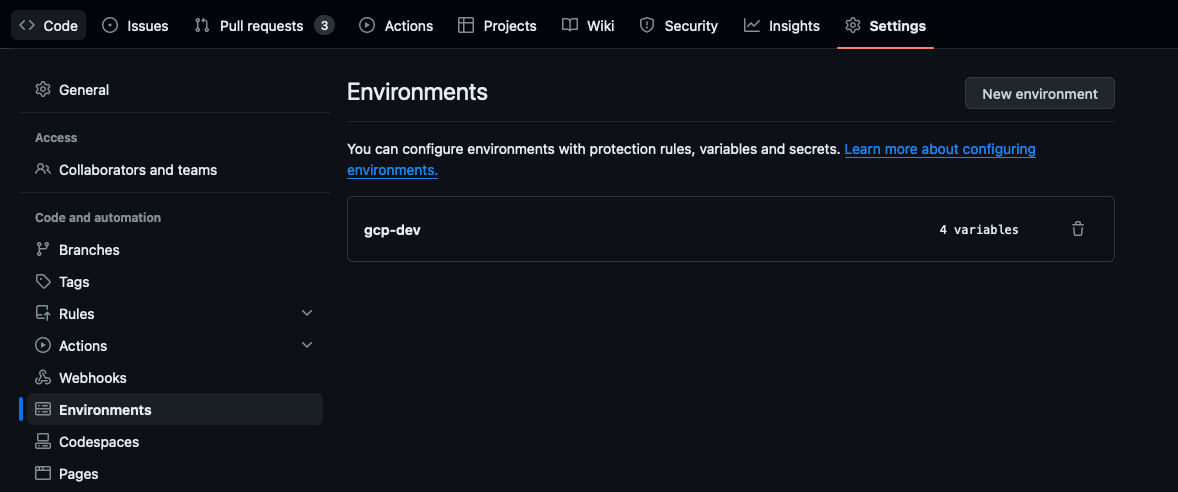Reference
Additional Information about how the P2P works.
Automatic GH Action authentication
As part of your tenancy you define GitHub repos.
All of those repos get passwordless access to deploy to your namespaces and any sub namespace you create.
Requirements
In order to use this pipeline, you’ll need to be a tenant of a Core Platform.
For any repo that wasn’t created out of Core Platform templates, but you would like to follow a recommended p2p standard, please use corectl as below:
corectl p2p env sync <app repository> <tenant> [flags]If the repo was created by corectl, it will automatically set the required variables.
Having these, you’re set to start deploying!
GitHub Variables
P2P pipelines expect some GitHub Variables to be configured.
You can configure it either automatically using corectl or manually.
Automatically
You can automatically set/update variables using corectl:
corectl p2p env sync <app-repository> <tenant-name>Manually
Create your environments with the following variables:
BASE_DOMAINe.g.gcp-dev.cecg.platform.cecg.ioINTERNAL_SERVICES_DOMAINe.g.gcp-dev-internal.cecg.platform.cecg.ioDPLATFORMenvironment name from platform-environments e.g.devPROJECT_IDproject id from platform environments e.g.core-platform-efb3c84cPROJECT_NUMBERproject number for the project id above

Git Environments
Usually you need at least two environments, e.g.
devprod
For an instance of the CECG Core Platform on GCP.
A single dev environment is enough for Fast Feedback.
Set the following repository variables (these may be set globally for your org):
FAST_FEEDBACKto{"include": [{"deploy_env": "dev"}]}EXTENDED_TESTto{"include": [{"deploy_env": "dev"}]}PRODto{"include": [{"deploy_env": "prod"}]}
And specifically for your app set:
TENANT_NAMEas configured in your tenancy in platform environments